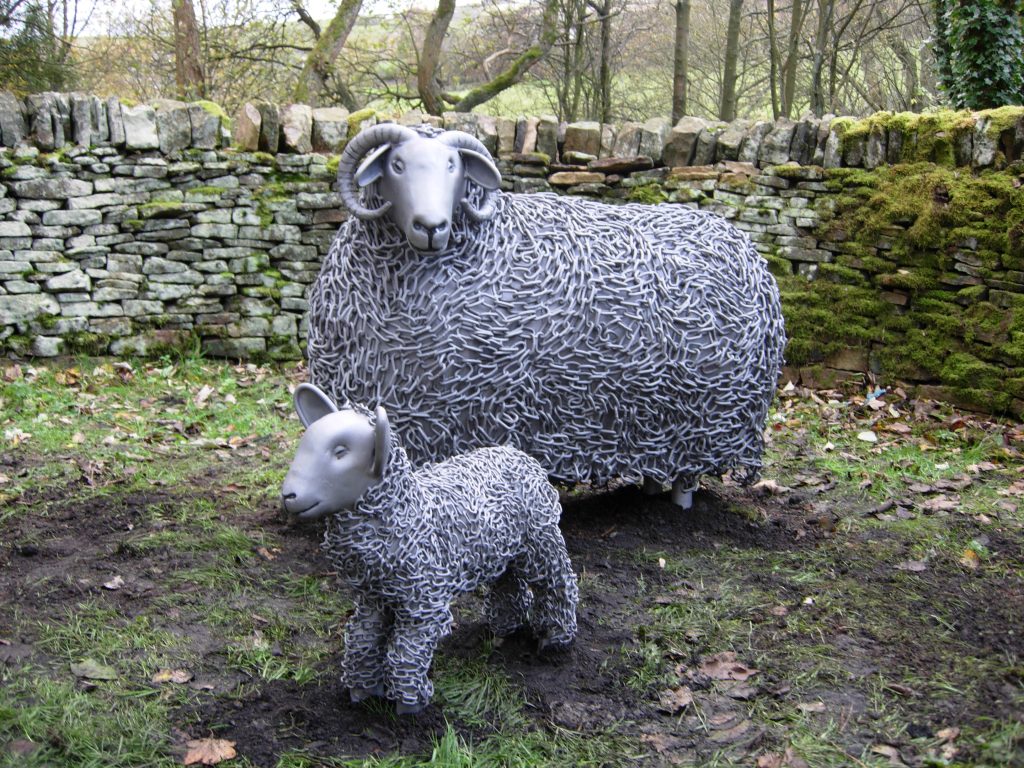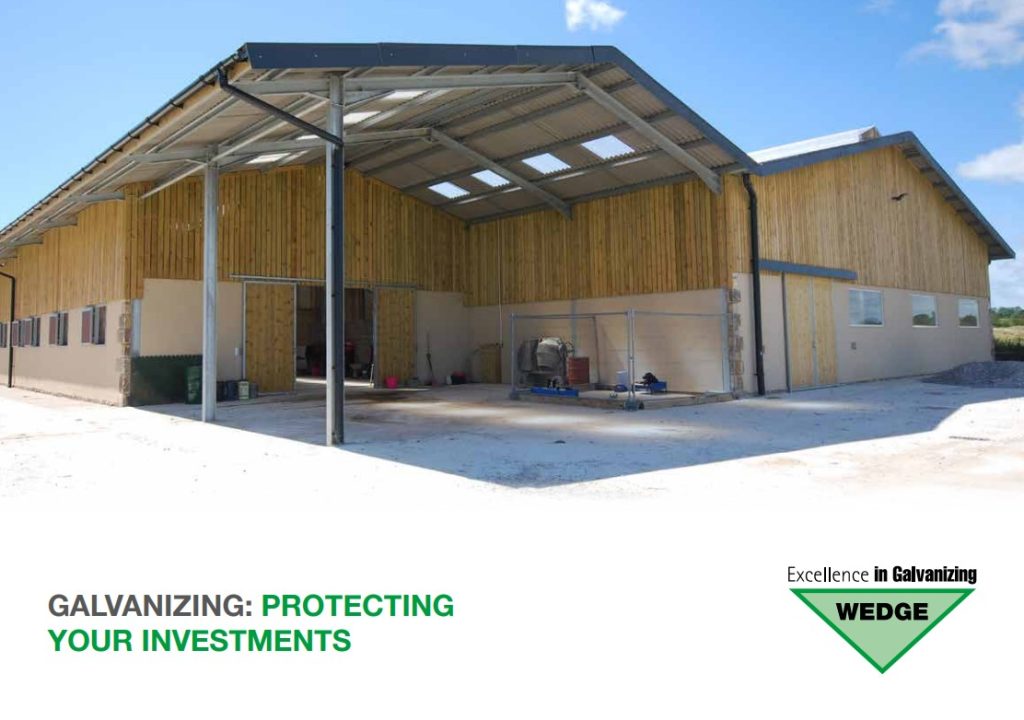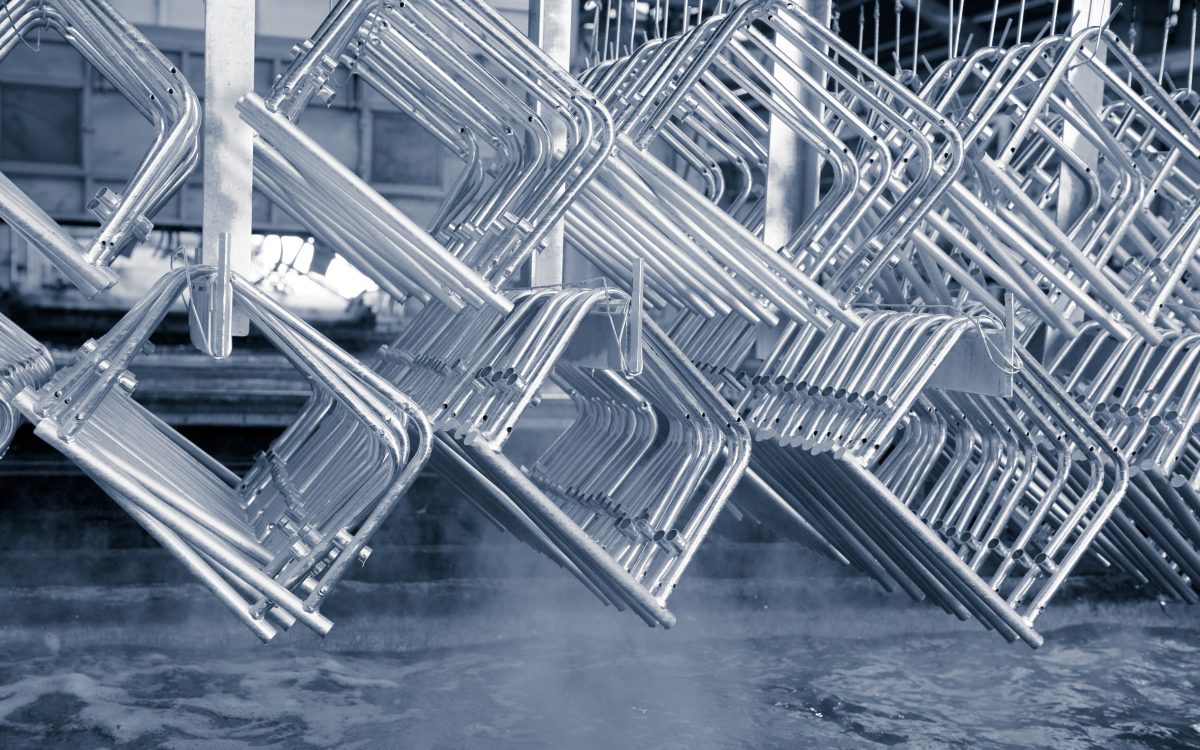
Agriculture
Galvanizing in Agricultural and Industrial Buildings
Steel is one of the most commonly used materials in agriculture for fencing and gates to building frames, feeding barriers, penstock and other equipment.
However, steel must be protected or it will rust, and that costs the agricultural industry many millions of pounds each year. Initial investment into galvanizing offers an economic method of steel protection that is tough, durable and safe with animals.
Maintenance free life
Galvanizing provides an easy to clean hygienic surface which can give your equipment an expected maintenance free life of up to 70 years. (This is dependent on the environment it is being used in).
The galvanized coating on fabricated products such as building frames, gates, penstock equipment and appliances lasts longer as it is about five times thicker than the galvanizing on items before fabrication such as sheet & strip used in roofing. Cladding can also be done immediately after galvanized steel is erected, you don’t have to wait for it to dry.

What we can offer you
• Collection and Delivery Service
• 24hr Turnaround on Request
• Unrivalled Customer Service
• Spin Galvanizing
• Technical Advice
Lead Free
Wedge Group Galvanizing completed a unique conversion to lead-free galvanizing over ten years ago.
The initiative was made particularly timely by the 2018 reclassification of lead contained in REACH (an EU regulation for the Registration, Evaluation and Authorisation of Chemicals).
Acidic Materials
Galvanized steel can be attacked by prolonged exposure to acidic materials such as slurry and manure. If this is likely a coat of bitumen paint should be applied to the galvanized steelwork. Short term exposure is not normally a problem providing the steelwork is rinsed off after use and allowed to dry.
Wedge Brochure
Download Galvanizing: Protecting your investments brochure here

FAQs
Hot dip galvanized steel will last very well in most environments. It is not uncommon for galvanized steel to last more than 70 years under certain conditions. Latest corrosion rates can be found at the Galvanizers Association
The three intermetallic layers that form during the galvanizing process are all harder than the substrate steel and have excellent abrasion resistance.
“White Rust”, or wet storage stain, is formed because zinc on newly-galvanized steel is very reactive and quickly forms zinc oxide and zinc hydroxide corrosion products that go on to become the stable zinc carbonate.
When galvanized steel is stacked damp, stored in wet boxes or shrink wrapped with no free-flowing air, the zinc forms excessive layers of zinc hydroxide, otherwise known as wet storage stain.
Most wet storage stain can be easily removed with a nylon brush. To prevent wet storage stain, store galvanized steel indoors and in such a way to allow free-flowing air between each galvanized item.
Testimonials
Wedge treat me as an individual and deliver a personal customer service. Quality is very good and consistent.
Customer for 30 years
Overall service is very good. Excellent quality. No issues.
Customer for 15 years
Have nothing to complain about. We get a good finish in quick time and cannot fault the transport service, it arrives as and when they say it will.
Customer for 5 years
Very happy with the service, everyone is very helpful and friendly, the quality is excellent.
Customer for 40 years
The turnaround is good and everyone is very responsive to requests.
Customer for 5 years
B E Wedge are our preferred galvanizing supplier, we always go to them, turnaround and quality are strengths
Customer for 9 years
Great reliability factor – they do what they say so there are no nasty suprises! Quality is to a good standard.
Customer for 15 years
Size of tank means that they can galvanize long and large products. Last job we had from them was excellent; delivery was on time and good quality of galvanizing.
Customer for 5 years
We haven’t been let down by East Anglian and our relationship has got off to a good start.
Customer for 1 year
They provide a complete package regarding service – on arrival, there’s always someone in the office for paperwork and to assist with unloading / loading of work.
Customer for 8 years
A very happy customer who is pleased with the quality and service provided.
Customer for 20 years
Good service provided, with three-day turnaround and the offer of premium service.
Customer for 5 years
I’m very happy with the turnaround and quality on work, staff are very helpful and efficient.
Customer for 15 years
Do You Have A Question? We’re Here To Help
CALL +44 (0)1902 601944
EMAIL INFO@WGGLTD.CO.UK
